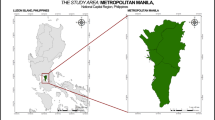Abstract
Bioclimatic comfort defines the optimal climatic conditions in which people feel healthy and dynamic. Bioclimatic comfort mapping methods are useful to urban managers and planners. For the purposes of planning, climatic conditions, as determined by bioclimatic comfort assessments, are important. Bioclimatic components such as temperature, relative humidity, and wind speeds are important in evaluating bioclimatic comfort. In this study of the climate of Kastamonu province, the most suitable areas in terms of bioclimatic comfort have been identified. In this context, climate values belonging to the province of Kastamonu are taken from a total of nine meteorological stations. Altitude (36–1050 m) between stations is noted for revealing climatic changes. The data collected from these stations, including average temperature, relative humidity, and wind speed values are transferred to geographical information system (GIS) using ArcMap 10.2.2 software. GIS maps created from the imported data has designated the most suitable comfort areas in and around the city of Kastamonu. As a result, the study shows that Kastamonu has suitable ranges for bioclimatic comfort zone. The range of bioclimatic comfort value for Kastamonu is 17.6 °C. It is between a comfort ranges which is 15–20 °C. Kastamonu City has suitable area for bioclimatic comfort.






Similar content being viewed by others
References
Attia, S., & De Herde, A. (2009). Bioclimatic architecture: design strategies in Egypt. Aachen, Germany: Sustainable energy technologies.
Bezlova, D., & Doncheva-Boneva, M. (2011). Protected areas at the black sea cost as natural resources for development of ecotourism. Journal of Environmental Protection and Ecology, 12(3), 1179–1185.
Cetin, M. (2015a). Using GIS analysis to assess urban green space in terms of accessibility: case study in Kutahya. International Journal of Sustainable Development & World Ecology. doi:10.1080/13504509.2015.1061066.
Cetin, M. (2015b). Evaluation of the sustainable tourism potential of a protected area for landscape planning: a case study of the ancient city of Pompeipolis in Kastamonu. International Journal of Sustainable Development & World Ecology. doi:10.1080/13504509.2015.1081651.
Cetin, M., Topay, M., Kaya, L. G., & Yilmaz, B. (2010). Efficiency of bioclimatic comfort in landscape planning process: the case of Kutahya. Suleyman Demirel University. Journal of Faculty of Forestry, A(1), 83–95. Isparta.
Gumus, A. E. (2012). Analysis of bioclimatic comfort of Ankara province. Suleyman Demirel University Faculty of Forestry Journal, 13, 48–56.
Kastamonu (2013) Kastamonu Province (Turkey): Municipalities, 2013. http://www.pbase.com/dosseman/kastamonu&page=all
Kaya, L. G., Cetin, M., & Doygun, H. (2009). A holistic approach in analyzing the landscape potential: Porsuk Dam Lake and its environs, Turkey. Fresenius Environmental Bulletin, 18(8), 1525–153.
Milne, M. (2013). Climate consultant 5.4. UCLA, Los Angeles: Energy design tool group.
Olgyay, V. (1973). Design with climate: bioclimatic approach to architectural regionalism. Princeton: Princeton University Press.
Steadman, R. G. (1979). The assessment of sultriness, part I: a temperature-humidity index based on human physiology and clothing science. Journal of Applied Meteorology, 18, 861–873.
Synnefa, A., Santamouris, M., & Akbari, H. (2007). Estimating the effect of using cool coatings on energy loads and thermal comfort in residential buildings in various climatic conditions. Energy and Buildings, 39(11), 1167–1174.
Topay, M. (2012a). Importance of thermal comfort in the sustainable landscape planning. Journal of Environmental Protection and Ecology, 13(3), 1480–1487.
Topay, M. (2012b) Human thermal comfort (HTC) for sustainable landscape planning, BENA Istanbul 2012 conference, sustainable landscape planning and safe environment proceedings book, 599–606, Istanbul.
Topay, M. (2013). Mapping of thermal comfort for outdoor recreation planning using GIS: the case of Isparta Province (Turkey). Turkish Journal of Agriculture and Forestry, 37, 110–120.
Topay, M., & Cinar, I. (2008). Determining of bioclimatic comfort structure of Suleyman Demirel University East Campuses situated in the back of Mediterranean region. Geophysical Research Abstracts, 10(2008). EGU general assembly.
Tsiourlis, G., Konstantinidis, P., & Xofis, P. (2012). An ecological assessment method: application to the vegetation units of the Lagadas country (Greece). Journal of Environmental Protection and Ecology, 13(3), 1560–1569.
TSMS. (2015) Turkish State Meteorological Service. The information of nine meteorological stations regarding temperature and relative humanity data between the years 1975 to 2013 for Kastamonu city.
Author information
Authors and Affiliations
Corresponding author
Rights and permissions
About this article
Cite this article
Cetin, M. Determining the bioclimatic comfort in Kastamonu City. Environ Monit Assess 187, 640 (2015). https://doi.org/10.1007/s10661-015-4861-3
Received:
Accepted:
Published:
DOI: https://doi.org/10.1007/s10661-015-4861-3




